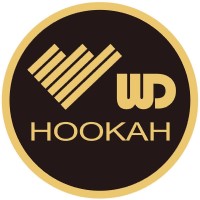
Companies and individuals must produce the appropriate financial statements and income tax returns each year as dictated by their country’s revenue collection agency. Failure to comply will result inventory accounting in fines and penalties and possible incarceration. In accounting, inventory is considered a current asset because a company typically plans to sell the finished products within a year.

So if a company is manufacturing or selling an outdated item, it may see a decrease in the value of its inventory. If this isn’t accurately captured in the company’s financial statements, then the value of the company’s https://www.bookstime.com/ assets and the company itself may be inflated. It is also recorded as an asset, because it can be used to sell on to generate revenue. When you do sell that item, the capital gained will be recorded as income.
Learn How NetSuite Can Streamline Your Business
The Ascent is a Motley Fool service that rates and reviews essential products for your everyday money matters. Weighted average is best used in a manufacturing environment where inventory is frequently intermingled, and difficult to track separately. Access all Xero features for 30 days, then decide which plan best suits your business. To understand your inventory, you need to know how much there is, what you’re spending on it, and how much you’re selling it for. If you’re in ecommerce, and the goods you sell are supplied directly from a third-party to the customer, then you don’t have inventory either.
Even Intuit pushes would-be QuickBooks Desktop users towards its cloud-based accounting software program, QuickBooks Online. If you need a little extra help with understanding these three types of inventory accounting, I will run through it again using new examples. For retailers, it is almost impossible to perform the physical count of thousands of products available in their store and warehouse.
What about cost of goods sold?
Methods to value the inventory include last-in, first-out (LIFO); first-in, first-out (FIFO); and the weighted average method. Like IAS 2, transport costs necessary to bring purchased inventory to its present location or condition form part of the cost of inventory. Unlike IAS 2, US GAAP does not contain specific guidance on storage and holding costs, which may give rise to differences from IFRS Standards in practice. In some cases, NRV of an item of inventory, which has been written down in one period, may subsequently increase. In such circumstances, IAS 2 requires the increase in value (i.e. the reversal), capped at the original cost, to be recognized.
If a company uses the periodic inventory system to create ending inventory balances, the physical count must be conducted correctly. This involves the completion of a specific series of activities to improve the odds of counting all inventory items. You can use rough estimates or get super specific in how you work this out. It all comes down to your inventory accounting methods, and the systems you put in place. Intuit QuickBooks Online is one of the most popular cloud-based accounting software services used by small, midsize and large businesses across the world.
Video: What Is Inventory?
The IRS also classifies merchandise and supplies as additional categories of inventory. If a company uses the perpetual inventory system to arrive at ending inventory balances, the accuracy of the transactions is paramount. Unlike US GAAP, inventories are generally measured at the lower of cost and NRV3 under IAS 2, regardless of the costing technique or cost formula used.
LIFO accounting also gives you a specific value for each item of inventory. You assume you sell your oldest items first (although that doesn’t have to happen in practice). It also gives you a better view of your profit margin and how it changes over time. Inventory accounting helps you figure out how much inventory you have, what it cost you, and what it’s worth to your business. It will help you see if your business is performing as well as it could.
Whereas inventory management tracks and controls the movement of inventory, the accounting side deals with the financial information intimately tied to the buying and selling of finished goods. When it comes to inventory accounting, you’ll learn everything you need to know in this guide to inventory accounting. As noted above, inventory is classified as a current asset on a company’s balance sheet, and it serves as a buffer between manufacturing and order fulfillment. When an inventory item is sold, its carrying cost transfers to the cost of goods sold (COGS) category on the income statement.
Companies using LIFO often disclose information using another cost formula; such disclosure reflects the actual flow of goods through inventory for the benefit of investors. Alternatively, providers like Zoho Books offer a free plan for small businesses with an annual revenue below $50,000 USD. Zoho Books is one of the most fully featured and scalable accounting solutions for small businesses. Its general ledger and chart of accounts are ideal for small-business owners new to bookkeeping, and it offers enough plans to support businesses scaling from startups to multi-entity companies. Instead, interested parties should schedule a free demo with a sales representative. During the demo, you’ll be able to ask specific questions about how the software could benefit your company.
